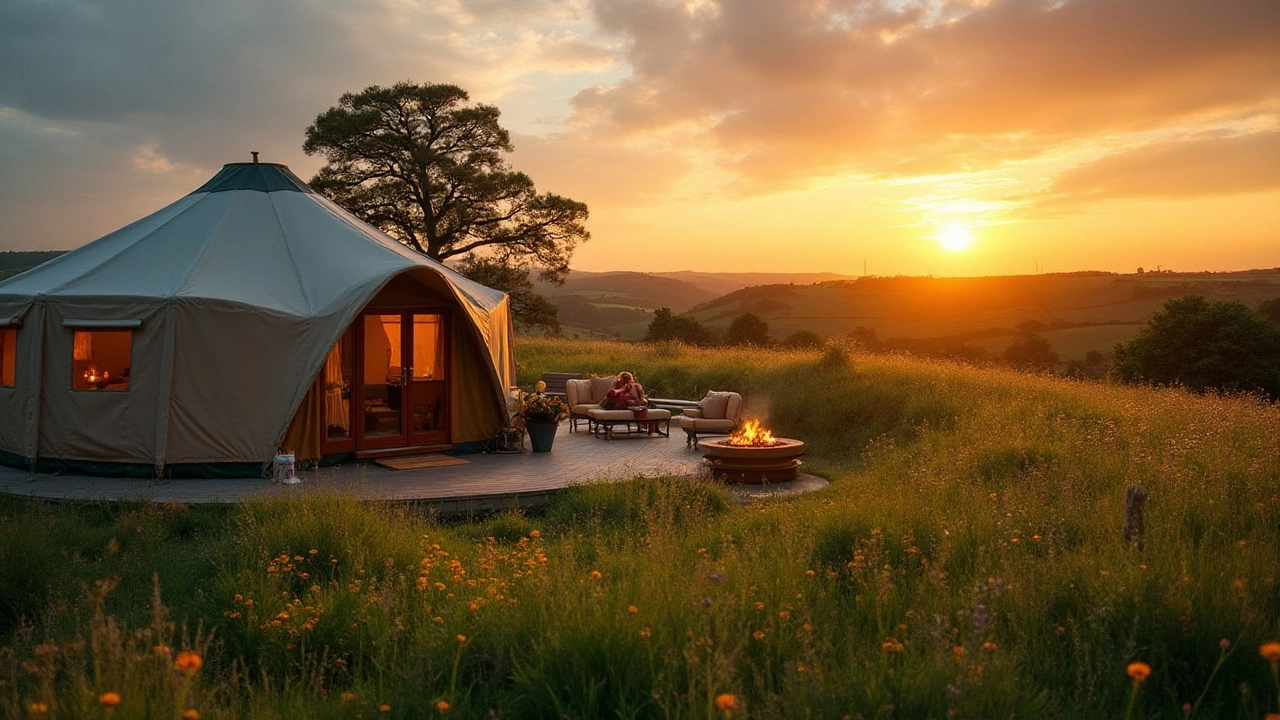Glamping Structure Costs – How Much to Spend on Your Dream Setup
Glamping is booming in the UK, but before you book a spot or build your own, you need to know the real price tag. From tiny yurts to sleek cabins, the cost can swing wildly. Below you’ll find a clear breakdown of the main structures, the things that push the price up or down, and practical ways to keep your budget in check.
Types of Glamping Structures and Their Price Ranges
Basic canvas tents are the entry‑level option. A 2‑person bell tent with a floor and basic poles typically runs between £300 and £700. Add a canvas floor, mosquito netting, or a small heater and you’re looking at £800‑£1,200.
Yurts sit a step higher in comfort and cost. A 3‑person yurt with insulated walls, a wood‑burning stove, and a raised floor usually costs £2,500‑£4,500. Luxury models with timber frames and interior furniture can climb to £6,000‑£9,000.
Safari‑style tents offer a more upscale feel, often with canvas walls, private decks, and full kitchens. Expect to pay £3,500‑£6,500 for a family‑size unit, depending on brand and accessories.
Prefabricated cabins provide solid walls and year‑round use. Small two‑bedroom cabins start around £15,000, while larger four‑bedroom units with plumbing and electricity can exceed £40,000.
Geodesic domes and A‑frames blend style with durability. Small domes for two people start at £4,000, while larger A‑frame cabins with lofts sit in the £12,000‑£25,000 range.
Factors That Change the Bottom Line
Size matters. Bigger floor areas need more material, stronger foundations, and higher transport costs. Double the area roughly doubles the price.
Material quality. UV‑treated canvas, double‑wall insulation, and hardwood frames all add to the cost but improve lifespan and comfort.
Site preparation. Leveling ground, laying a foundation slab, or installing drainage can add £1,000‑£5,000 depending on terrain.
Utilities. Hooking up electricity, water, and waste systems is often the biggest hidden expense. A basic off‑grid solar kit and water tank might cost £2,000‑£4,000; full mains connection can push the total over £10,000.
Permits and planning. Some councils require planning permission for permanent structures over a certain size. Application fees and any required surveys can add a few hundred pounds.
Extras. Furniture, heating appliances, lighting, and interior décor can easily add another £500‑£2,000.
Knowing these factors helps you spot where you can cut costs without sacrificing the experience you want.
Smart Ways to Keep Your Glamping Budget in Check
Go DIY where you can. Building a simple frame and sourcing a used canvas from a reputable supplier often saves 20‑30 % compared to a full‑service kit.
Consider buying second‑hand. Many glamping operators retire their units after a few seasons. You can find well‑maintained yurts or cabins on specialist marketplaces for a fraction of the new price.
Rent before you buy. A weekend or two‑week stay in a local glamping site lets you test the layout and comfort level, helping avoid costly mistakes.
Shop off‑season. Suppliers often discount inventory in winter months when demand is low. Planning your purchase for January‑March can shave a few hundred pounds off most items.
Bundle services. If you need electricity, water, and waste removal, ask for a combined quote. Bundling can reduce installation fees and sometimes earns you a discount on equipment.
With a clear picture of structure types, price drivers, and budgeting tricks, you can plan a glamping setup that fits your pocket and your getaway dreams.
Cost Analysis of Glamping Structures: Invest in Comfort
Glamping has taken the travel world by storm, offering a luxurious spin on traditional camping. Delving into the costs associated with building glamping structures can illuminate pathways for those dreaming of owning a sleek glamping retreat. From yurts and safari tents to treehouses and tiny cabins, each option offers unique features and price tags that vary based on size, materials, and amenities. Learning about these can empower potential investors and adventure-seekers to make informed decisions.
- Oct, 19 2024
- 0 Comments
